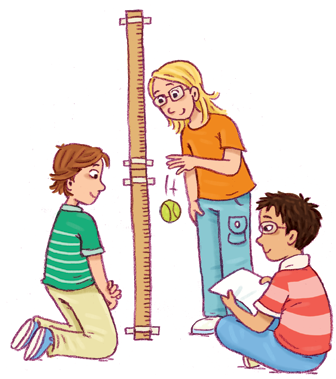Jessie said, “We’d have to try it out. We’d have to write down where we want to drop the ball. Then, drop the ball and measure how high it bounces.”
Mrs. Dewey said, “Here is the challenge: if I give you a drop height, can you predict the bounce height? Can you make a prediction that is close to the actual bounce height?”
You will use the TIMS Laboratory Method to carry out two experiments: one with a tennis ball and one with a SuperBall®. Using the results of your experiments, you should be able to accurately predict the bounce height of either ball, if you know the drop height.

Identifying the Variables
One of the first tasks in setting up an experiment is identifying the variables. The two main variables in these two experiments are the drop height (D) and the bounce height (B).
We have special names for the two main variables in any experiment. The variable with values we know at the beginning of the experiment is called the manipulated variable. We can often choose the values of the manipulated variable. The variable with values we learn by doing the experiment is called the responding variable.
During an experiment, we see how changes in the manipulated variable affect the responding variable. In the Bouncing Ball experiments, good values for the drop height (D) are 40 cm, 80 cm, and 120 cm. Each time you change the drop height, you measure the bounce height (B).












